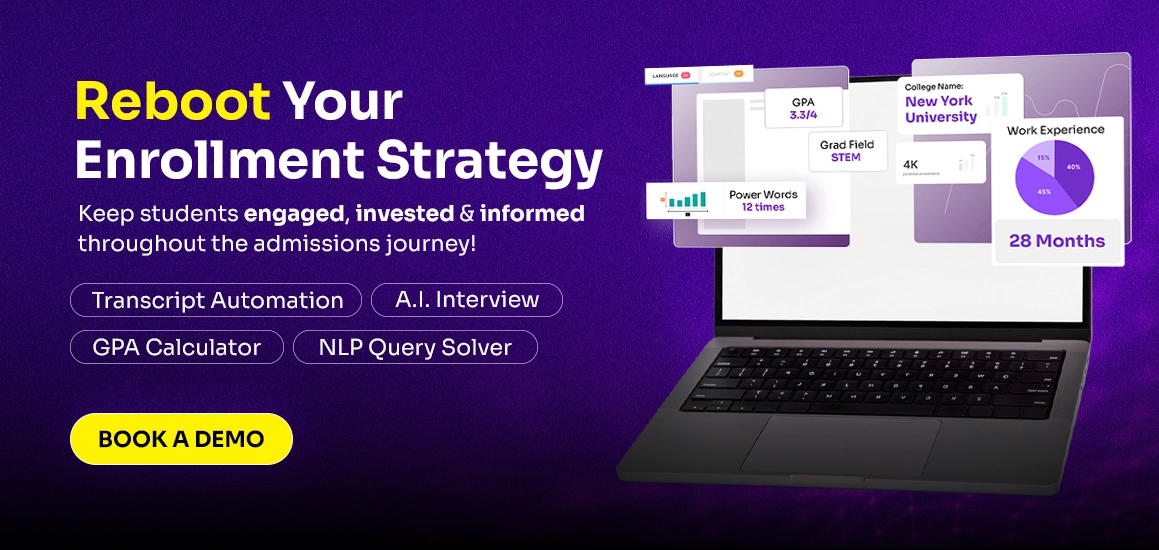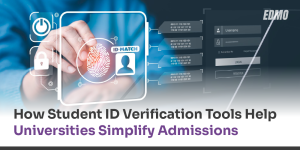Table Of Contents
- 1Introduction
- 2Why do Universities Refresh Their Branding?
- 3Key Motivations for Rebranding a University:
- 4Critical Signs Your College or University Needs a Rebranding Campaign
- 5Strategies for a Winning Brand Update
- 6Shaping a New Identity: The Path to a Fresh University Brand
- 710 Successful University Rebranding Examples
- 8Summary
Introduction
Explore how universities are redefining their identities through strategic rebranding—uncover the motivations, challenges, and real-world examples that highlight the transformative power of a well-executed brand refresh in today’s competitive higher education landscape.
In an increasingly saturated higher education marketplace, effective branding is now mission‑critical for universities. According to Hanover’s 2025 trends report, 28% of institutions are integrating competitor analysis into social media strategies to boost brand recognition and market positioning. Meanwhile, 95% of educational institutions worldwide now prioritise digital transformation, with 79% actively investing in digital initiatives to support these efforts. These dynamics highlight the vital link between rebranding and digital innovation in maintaining market relevance.
Social media’s influence on university perception is more pronounced than ever: a 2024 QS International Student Survey found that 57% of prospective students rely on platforms like Instagram and TikTok to research universities. Further, user‑generated content published by students and alumni can drive 28% higher engagement rates, lending authenticity to institutional brands. With TikTok boasting over 1 billion monthly users, institutions have a powerful tool at their disposal for dynamic, real-time engagement.

The economic stakes are significant. The global education services market is projected to grow from $3.7 trillion in 2025 to $4.98 trillion by 2028, intensifying competition among universities vying for attention. Concurrently, digital branding extends beyond social media; 60% of colleges are investing in virtual and augmented reality to enhance student experience, while 45% deploy AI tools to personalise content and engagement.
Such transformations underscore that rebranding today must be data‑driven, digitally enabled, and tied directly to institutional goals. In the sections ahead, we explore proven strategies, common pitfalls, and case studies that reveal how rebranding can redefine a university’s future.
Why do Universities Refresh Their Branding?
In an increasingly competitive and globalised education landscape, university branding is no longer just a logo or a tagline—it’s a strategic tool that shapes perception, attracts talent, and drives growth. A university’s brand influences how it is viewed by prospective students, faculty, donors, alumni, and even policymakers. As priorities, technologies, and student expectations evolve, so must the university’s identity.
Key Motivations for Rebranding a University:
- Stay Relevant in a Changing Market:
With student demographics shifting and digital platforms influencing decision-making, universities must update their messaging and visual identity to resonate with Gen Z and beyond.
A modern brand ensures that institutions remain appealing to younger audiences who value authenticity, inclusivity, and tech-savviness. Staying current also signals that the university evolves with societal and technological changes. - Align with Strategic Vision:
Institutions often refresh their brand to reflect a new mission, values, or academic focus, such as pivoting to research-intensive goals, sustainability, or global outreach.
This alignment helps communicate long-term goals more effectively to stakeholders, reinforcing trust and credibility. It also ensures consistency between internal culture and external perception. - Boost Enrollment & Reputation:
Rebranding can re-energise marketing efforts, clarify offerings, and attract new students, especially in a crowded higher education space.
A clear, compelling brand story helps students identify the institution’s unique value proposition. This visibility can lead to increased applications, better-fit enrollments, and stronger peer recognition. - Merge or Expand Offerings:
After mergers, acquisitions, or significant program additions, a brand refresh helps unify identities under one cohesive image.
It creates a seamless narrative that reflects the institution’s new structure and broader academic portfolio. This reduces confusion for students, staff, and stakeholders while promoting a unified institutional identity. - Overcome Negative Perception or Crisis:
If a university has faced controversies, outdated perceptions, or stagnation, a brand overhaul can help reset its public image.
Strategic rebranding shows accountability and a forward-looking mindset. It allows institutions to rebuild trust, highlight improvements, and distance themselves from past challenges. - Attract Donors and Partnerships:
A strong, modern brand appeals to corporate partners, government agencies, and philanthropic donors looking for innovation and leadership.
It demonstrates professionalism, strategic direction, and a readiness to collaborate. A compelling brand also makes it easier to align with donor values and attract funding for major initiatives. - Improve Global Competitiveness:
International rankings, collaborations, and student mobility require a globally appealing and digitally optimised brand presence.
An updated brand helps universities stand out in international education fairs, online platforms, and global partnerships. It also reflects cultural sensitivity and digital readiness that global audiences expect.
Critical Signs Your College or University Needs a Rebranding Campaign

Sometimes, the most evident signs that a rebrand is needed come from within, through declining engagement or external confusion. Recognising these red flags early allows institutions to act proactively and protect their reputation and relevance.
Top Signs to Watch:
- Outdated Logo or Messaging
When your visuals or tone feels more than 10 years behind current trends.
An old-fashioned logo, slogan, or tone can create a disconnect with tech-savvy Gen Z students who value modern aesthetics and authenticity. This can make your university appear irrelevant or stagnant—a fresh, updated visual identity signals progress and future-readiness. - Declining Enrollment or Engagement
A drop in student applications or digital engagement can signal misalignment with your audience.
If your brand doesn’t connect emotionally or intellectually with your target audience, students will simply look elsewhere. This decline could be due to unclear messaging, outdated marketing, or a lack of differentiation. Rebranding can help rekindle interest and restore trust. - Confused Brand Identity
If stakeholders describe the institution inconsistently, there’s a branding clarity issue.
A strong brand should evoke the same message, tone, and values across all touchpoints—be it faculty, students, or alumni. If everyone has a different story, it’s time to revisit your core identity. Brand confusion can also weaken external partnerships and donor confidence. - Reputation Damage
Scandals, accreditation issues, or PR missteps require strategic brand repositioning.
Negative press can linger in public memory. Rebranding helps draw a line between the past and a better, values-driven future. It’s not about masking problems—but about demonstrating genuine transformation and a renewed commitment to excellence and accountability - Institutional Changes
Mergers, acquisitions, or mission updates should be reflected in your identity.
When the core structure or vision of a university changes, the brand must evolve to reflect this new reality. An outdated identity may confuse stakeholders and reduce internal cohesion. A refreshed brand helps communicate growth, expansion, and a unified vision.
- Lack of Recognition
If prospective students and partners struggle to distinguish you from competitors.
In a crowded market, sounding “just like everyone else” can make you invisible. If your messaging or visuals aren’t standing out, it’s time for a brand audit. Differentiation is key to being memorable, trustworthy, and top-of-mind for students and collaborators alike.
- Feedback from Stakeholders
When students, faculty, or alumni express that the brand no longer reflects who you are.
Internal feedback is a critical indicator of brand health. When the people who represent or have experienced your institution feel disconnected from your current image, that’s a red flag. Their insights can guide a meaningful, values-aligned rebrand that strengthens community pride. - Digital Invisibility
Poor SEO, outdated website design, or social media inactivity may show you’re digitally behind.
Today’s students live online—if your digital presence is weak, you’re essentially invisible. Rebranding should go hand-in-hand with digital transformation: from optimising SEO and updating UX to creating engaging content on platforms where students spend time.
Strategies for a Winning Brand Update
A successful university rebrand goes far beyond just changing a logo. It’s about realigning the institution’s identity with its vision, audience, and competitive edge. A winning brand update is built on strategy, data, and storytelling—connecting tradition with innovation. Below are the essential components and techniques that help institutions rebrand effectively while maintaining authenticity and stakeholder trust.
- Comprehensive Brand Audit
- Assess current brand perception, performance, and gaps internally and externally.
- Evaluate competition and evolving audience expectations.
- Clearly Defined Purpose & Vision
- Know exactly why you’re rebranding—whether it’s to reposition, modernise, or recover reputation.
- Align the rebrand with institutional mission and long-term strategy.
- Stakeholder Involvement
- Involve students, faculty, alumni, and donors from the start to build buy-in and reduce resistance.
- Conduct surveys, interviews, and workshops.
- Strong Visual Identity System
- Redesign logos, colours, typography, and brand elements that are cohesive, scalable, and digital-first.
- Ensure accessibility and consistency across all mediums.
- Compelling Brand Story & Messaging
Develop a clear narrative that conveys who you are, what you stand for, and what sets you apart.- Align all messaging across marketing, admissions, and PR.
- Align all messaging across marketing, admissions, and PR.
- Digital-Centric Execution
- Prioritise website redesign, mobile responsiveness, SEO, and social media branding.
- Integrate new identity into email, LMS, virtual tours, and digital ads.
- Brand Launch Strategy
- Plan a phased or full-scale brand reveal with coordinated internal and external communications.
- Use teaser campaigns, launch videos, events, and press releases.
- Training & Implementation
- Educate staff and departments on how to use the new brand correctly through guidelines and training sessions.
- Educate staff and departments on how to use the new brand correctly through guidelines and training sessions.
- Monitoring & Feedback Loop
- Use KPIs like brand recognition, student engagement, application growth, and sentiment tracking to measure success.
- Make iterative updates based on data and feedback.
Shaping a New Identity: The Path to a Fresh University Brand
In today’s competitive academic landscape, reshaping a university’s identity demands strategic vision and data-driven agility. Institutions are embracing digital-first branding, stakeholder co-creation, and purpose-led narratives to differentiate themselves and attract new audiences. Success lies in blending tradition with innovation, measuring impact through real-time metrics like enrollment shifts, digital engagement, and public sentiment.
Key Strategies & Components
- Data-Driven Brand Audit
Universities conduct in-depth audits—via surveys and analytics—to understand current perceptions and gaps.- U.S. freshmen enrollment dropped by 1.4 million in Fall 2022, triggering a wave of rebrands from 2025 to 2029.
- Surveys and focus groups inform strategic narratives—e.g., Georgetown’s McDonough School surveyed over 1,600 stakeholders to reposition itself for global MBA audiences.
- Stakeholder-Led Strategy
Engaging students, faculty, and alumni ensures authenticity and support.- University of Texas, San Antonio conducted over 45 meetings, gathering input from 1,000+ students, alumni, donors, and faculty during its UTSA–UT Health merger branding.
- University of Texas, San Antonio conducted over 45 meetings, gathering input from 1,000+ students, alumni, donors, and faculty during its UTSA–UT Health merger branding.
- Digital-First Identity
Rebrands today prioritise digital transformation—web, mobile, and social.- Western Colorado University revamped its 2,000+ page website in 12 months, resulting in a 61% increase in users and a 40% rise in applications.
- Western Colorado University revamped its 2,000+ page website in 12 months, resulting in a 61% increase in users and a 40% rise in applications.
- Emphasis on Authentic Storytelling
Human stories resonate more than ads, especially with Gen Z.- User-generated content yields 28% higher engagement rates, essential for Gen-Z recruitment.
- Case Western Reserve’s 2023 “sunburst” redesign received mixed reviews, highlighting the need to honour legacy.
- Texas Tech’s marketing team earned 58 CASE awards using narrative-driven video storytelling.
- Balancing Tradition & Modernity
Maintaining legacy elements like mascots or mottos ensures alumni loyalty.- UTSA retained its beloved mascot Rowdy amid a major visual update tied to a broader institutional merger.
- UTSA retained its beloved mascot Rowdy amid a major visual update tied to a broader institutional merger.
- Diversity, Equity & Inclusion (DEI)
Today’s branding must reflect inclusive values.- With 16 million U.S. undergraduates in Fall 2024, incorporating inclusive messaging and showcasing DEI initiatives is vital.
- With 16 million U.S. undergraduates in Fall 2024, incorporating inclusive messaging and showcasing DEI initiatives is vital.
- Tangible Enrollment & Engagement Metrics
- IU Indianapolis launched its standalone IU Indy brand in 2024–25, achieving a 10% uptick in freshman enrollment and projecting nearly 20% growth in Year 2.
- Adelaide University combined iconography and curriculum rebrand with a merger, targeting 200,000+ students and $500 million in economic impact by 2034.
10 Successful University Rebranding Examples

A powerful university rebrand can rejuvenate institutional identity, clarify mission, and boost competitive standing. From modern logos to inclusive naming, these ten real-world examples demonstrate how data-driven strategy, stakeholder engagement, and clear vision can yield impressive outcomes.
- UNC Charlotte → “Charlotte”
Adopted the moniker “Charlotte” and introduced an “All‑in‑C” green logo to distinguish itself from UNC Chapel Hill, aiming to lift national rankings and clarify brand identity. - Mississippi University for Women → Mississippi Brightwell University (proposed)
Proposed dropping “Women” to reflect a diversified student body—male enrollment at 22%—after stakeholder feedback recommended a more inclusive name. - Adelaide University (merger)
Launched a new logo featuring a state outline and minimalist design after merging with the University of South Australia, targeting a top‑1% global ranking and stronger international appeal. - UTSA (merger with UT Health San Antonio)
Updated its shield logo and full name but retained beloved mascot “Rowdy” to balance a modern visual identity with tradition, following 45+ stakeholder sessions. - University of Suffolk (formerly UCS)
Transitioned from “University Campus Suffolk” to “University of Suffolk” in 2016, then launched a bolder visual identity in 2017. This led to increased UCAS applications and improved brand consistency. - Case Western Reserve University
Overhauled its logo in June 2023, moving to a simplified sunburst design. The change rebalanced name prominence but drew mixed reactions, illustrating the importance of managing stakeholder sentiment. - Colorado College
In 2016, introduced a modern logo using circles and triangles to represent its block‑plan curriculum and mountainous environment, enhancing visual coherence. - East Stroudsburg University
Replaced a 24-year-old logo in 2017 with a banner-style design and new mascot representation, reflecting its regional identity near the Delaware Water Gap. - Ravensbourne University
After gaining degree-awarding powers, the London-based university hired a top agency to revamp its logo and visual language, boosting attention and brand clarity. - Birmingham City University
Simplified its name and refreshed its logo in 2009 – 2007, repositioning itself as a city-centric institution; the rebrand cost about £ 285k.
Summary
In today’s hyper-competitive education world, a fresh logo isn’t just a facelift—it’s a strategic move. Universities are revamping their brand identities to stay relevant, attract Gen Z students, stand out in global rankings, and recover from outdated perceptions. From digital-first makeovers to inclusive naming, rebranding now touches everything—websites, social media, mascots, and even mission statements.
Think Charlotte ditching “UNC” for a cleaner identity or UTSA keeping their mascot “Rowdy” while merging with UT Health—it’s a tightrope between heritage and modernity. Rebrands today aren’t just visual—they’re backed by data, driven by purpose, and powered by people. And when done right, the results speak volumes: rising enrollment, deeper engagement, stronger donor ties, and revitalised public image.
But it’s not all smooth sailing. Resistance to change, budget constraints, and inconsistent rollouts can derail even the best intentions. That’s why successful universities audit their brand DNA, co-create with stakeholders, and execute across every platform—from TikTok to campus signage.
Whether it’s about embracing inclusivity, aligning with new goals, or rebuilding trust, rebranding is no longer optional—it’s a necessity. In the battle for attention and impact, universities are proving that a bold new brand is the first step toward a brighter, bolder future.










No comments yet. Be the first to comment!
Leave a Comment